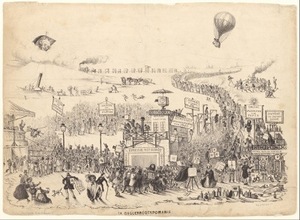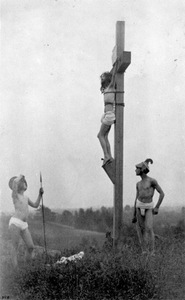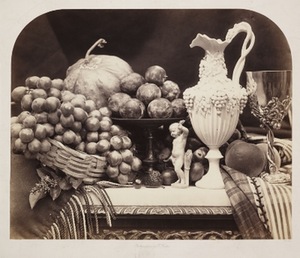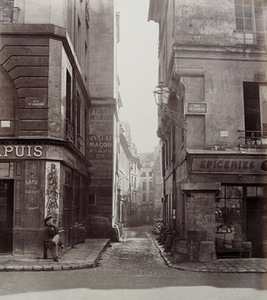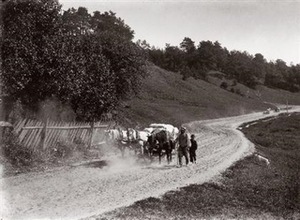The world on plate. Fight between photography and painting 3
In brief: Photography calculates its second century of existence only but it has already become part of the world culture. It is interesting what attitudes prevailed at the time when this technology made its first steps and how this reflected in Lithuania. From views of war to artistically constructed images – photography became the sign of modern epoch which made an influence on many countries.
In 1839, the physicist and prominent academician François Arago (1786 – 1853) offered to the French Government to allocate two pensions of 6000 and 4000 francs to Louis Jacquesas Mandé Daguerre (1787 – 1851) and Isidore Niépce (son of Joseph Nicéphore Niépce (1765 – 1833)), who perfected camera obscura, which enabled to capture the real view of surroundings. The glory of invention was finally attributed to L. J. M. Daguerre.
The essence of invention of L. Daguerre is that he succeeded to transfer the exact forms of nature, things and artworks as well as the perspective with all details and shadows on a plate. This invention exploded in Europe as a bomb and spread at the speed of lightning. The contemporaries called it “daguerreotype mania”, which was often mocked in caricatures. At the same time questions appeared whether the invention could be useful in archaeology and art. It appeared useful to scientists. Finally, photography was called a separate art field which could become a challenge to painting. The author of the article presents a number of detailed facts how artists and photographers competed or replenished each other’s work after the appearance of photography in the world.
Meanwhile, in 1864 – 1865, photography started serving art as well as science in Lithuania too. One of the fields were it was applied was astronomy (interest of Vilnius astronomer M. Gusevas in the possibilities of photography) and in botany (attempts of Laurynas Ivinskis (1810 – 1881) to photograph plants). At the same time Lithuania could boast of city views and “artistically constructed plots” in photographs that did not yield to Western Europe. The first fact of taking photographs in Lithuania was registered and is related with the name of the architect Boleslov Podczaszynski.
Contrary from Western Europe, not many photographs were made in the open air in the 19th century, photographs were created in an artistically constructed indoor setting the most frequently. Vilnius photographers worked in the open air the most. An exception is the Austrian photographer Anton Rohrbach, who left oldest panoramic views of Kaunas. One of the father of colour photography, Russian artist Sergei Prokudin – Gorsky also visited Lithuania and created photographs of places where fights with Napoleon took place one hundred years ago.
Photography gained popularity from the 7th decade of the 19th century, aristocrats became interested in it. One of such noblemen was the count Stanislovas Kazimieras Kosakovskis (1837 – 1905), who established his photo laboratory in Vaitkuškis palace in 1890 – 1894.
Two albums of B. H. Tiškevičius have survived until now. One is located in Warsaw, another – in Paris. The latter was found in the antique shop and granted to N. Niépce museum, where the exhibition of the Lithuanian photographer was organised.
Lithuania was also photographed by the Prussian artist Albert Sveikovsky (1829 – ?). His panorama of Vilnius consists of five parts (1864 – 1866) and was recently discovered in Russia, State History Museum. It is one of the largest collections in Europe. One of the most abundant collections of views of Vilnius and its surroundings, Neris banks and several views of Kaunas has been left by J. Čechavičius.
Of course, one of the most famous Lithuanian photographers is Stanislovas Filibertas Fleury (1858 – 1915). Thanks to him we can see Vilnius and its surrounding on the crossing of the centuries, we can examine narrow streets of Vilnius, admire colourful market places, visit Trakai, Kernavė and Vilnija manors in our thoughts.
Thus, history shows that photography caused fear to painting but did not overcome it. The new invention enables us to look at the world in which our ancestors lived closer, and this world is much more real than the one painted on canvas.
